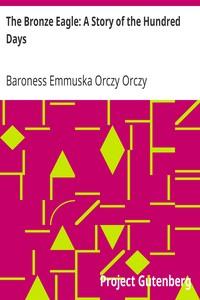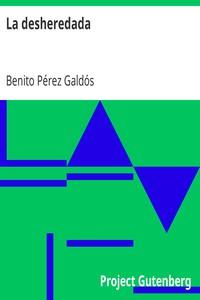|
|
Read this ebook for free! No credit card needed, absolutely nothing to pay.Words: 81739 in 28 pages
This is an ebook sharing website. You can read the uploaded ebooks for free here. No credit cards needed, nothing to pay. If you want to own a digital copy of the ebook, or want to read offline with your favorite ebook-reader, then you can choose to buy and download the ebook.

: Northern Nut Growers Association Report of the Proceedings at the 43rd Annual Meeting Rockport Indiana August 25 26 and 27 1952 by Northern Nut Growers Association Editor - Northern Nut Growers Association Periodicals; Nut trees Periodicals; Nuts Periodica@FreeBooksWed 07 Jun, 2023 using modern techniques in securing new varieties of hardy nut trees. Some progress in hybridization, of course, has been made, particularly with the filberts, the hybrids developed by J. F. Jones, G. L. Slate, S. H. Graham, Heben Corsan and some others, showing great improvement over previous European varieties in their adaptability to the northern United States. At the present time there are filbert varieties of hybrid origin better than those in the nursery trade which should be propagated and made available. Work with the Chinese chestnuts has also been valuable. It is my opinion, which I believe is shared by most of those who are familiar with progress in securing new varieties, that we are not likely to find in the wild, varieties or clones which show any marked improvement over those already found and named. There is, of course, always the possibility of the "perfect nut" arising as a chance variation. The recent walnut and hickory contests, however, have been somewhat disappointing for they have not discovered any variety of black walnut better than the Thomas for instance, or a hickory much better than some of those located years ago. This does not mean that members of the Association should not keep a sharp lookout for new varieties occurring spontaneously which will be better than existing sorts. It does mean, however, that if real "breaks" are to be secured, it will be necessary to apply some of the more effective techniques which are known in the plant breeding field. Any such program is a long time project and can only be effectively attempted by experiment stations, or by some of the young men, who begin now to make crosses under the direction or at least with the advice of those who are familiar with plant breeding techniques. Progress has been made in the Association organization. The constitution has been thoroughly overhauled and amended, particularly to provide for regional groups. Certainly such groups are to be encouraged and have done and will do much to strengthen the national organization in the various states. It is my personal opinion that these regional groups can be of particular value in working with the experiment stations and legislatures to promote the interests of the Association. The state associations should be on the alert to build on the interests of conservation departments as related to wildlife preserves and sportsmen's clubs and other agencies which put the growing of nut trees in proper perspective. I am not at all in favor of securing either federal or state support for every minor project which comes along. However, the Northern Nut Growers Association need make no apologies for its program, particularly as it is related to the conservation of our natural resources; to the promotion of better living on the farm and those values which are real and great, even though they do not show up large in dollar value of crops produced. Unfortunately, projects in nut growing have been started in various states, particularly Ohio and Michigan only to be eliminated before they really got under way because of lack of support. Experiment station directors, if they are confronted with a shortage of funds, are likely to run the blue pencil through items which cannot be backed up with economic considerations. The approach of the Northern Nut Growers Association it seems to me should not be to seek support on an economic basis but rather on the basis of better living on the farm, improvement of gardens and farmsteads and the advantages of growing nut trees as compared with any other horticultural activity. There has been a real increase in the importance which is given to this approach in recent times and an active state association, which can keep in touch with local conditions and call on the national association for additional support, will certainly be of great assistance in the future. I personally am not in favor of any sort of a set up by which the national association gives a kick back of national dues to a regional association. The dues are inadequate for the national association at the present time. Looking at the whole situation with some perspective, it would seem that the regional associations might contribute to the national association rather than the reverse. If the constitution and by-laws of the Association are not such as to make affiliation with the national association and the formation of regional associations easy, they can readily be changed to secure the very best pattern that can be devised. Perhaps one of the most acute problems with which the Association is faced is the struggle to keep financially solvent. We are all aware of our changing economy, particularly the increased costs of printing and in fact of everything that our organization uses or needs, even postage. In my thinking, the finances of the Association are much the same as those of an individual, who is confronted with expenditures that exceed his income. The things that have to be done are obvious and the same in both cases. One is to spend less and the other is to secure more funds. In the judgment of your directors and executive committee, expenditures have been reduced as low as is safe in order to keep a going organization. Members join the Association for the value which they get out of it and a large part of this value is in the form of reports, newsletters, information made available and the organization of annual meetings. If these services were discontinued or curtailed, membership falls off. This has been the experience of other plant societies, of which there are many. In my judgment retrenchment is not the answer in the present situation. Securing additional funds is the best forward-looking policy. The question comes up as to how this may be done. Experience in our Association and I believe other associations as well, has shown that .00 is about as far as dues can be raised. There comes a point with every society when, if the dues are increased, there is a falling off of membership, which more than offsets the gain. Other obvious procedures are: increasing the number of members; providing different types of memberships to encourage larger contributions; gifts; and special fund raising projects. Of these various ways and means, certainly increasing the number of members is by far the more promising. The overhead of the association is not increased with additional memberships anywhere near in proportion to the contributions of those members. This is particularly true for additional copies of the report and general office expense. The drive for new members under President Best's leadership has produced gratifying results and I believe if this is continued effectively through the next few years, a membership increase can be secured that will assure the Association's balancing its budget. Somewhere in the neighborhood of a thousand paid memberships would solve most of our financial difficulties. Provision is already made for different types of memberships and it is to be hoped that many who can do so will join the contributing member class at least until we are out of our present financial woods. Other societies raise considerable revenue through special projects such as the sale of publications of one kind or another, seed distribution or slide rental. The type of material with which the Northern Nut Growers Association deals is not comparable to some of these other organizations but certainly the possibilities of revenue through special projects need to be explored. Research with northern nut trees is exceedingly important from the standpoint of accomplishing the objectives of the Association. The matter of breeding new varieties has already been touched on. Other types of research are such that a large part must be carried on by experiment stations which have a continuing program. Much has been done in securing observational information by Association members themselves but some problems are such that they must be continued over a long period of time and set up with adequate checks and provision for securing significant data. Otherwise the results are of no real value. Granted we need all the sound observational experience that all the members can bring to our problems, there are still aspects of culture of northern nut trees that need continuing program of scientific research. Fortunately, much of the cultural information secured with nut crops of economic value is directly applicable to northern nut trees. This is true of the work with northwestern filberts, western walnuts, southern pecans and even the tung industry. There comes a point, however, when information thus gained needs to be checked under the specific conditions where the crops are grown and very little research has been done in the northern states where the hardy nuts are important. Of special importance to the northern nut growers is the control of diseases and insects. At the present time the bunch disease of walnuts is becoming increasingly more troublesome and very little is known as to how this is spread or how it may be controlled. In my own filbert planting, the hazel bud mite during past years has made the crop practically a failure. Little apparently is known as to the life history of this insect or when miticides might be applied. Examples such as the bunch disease and mite damage are multiplied many times with other diseases of local or regional importance. In my thinking our best hope for getting something done is to encourage the Departments of Entomology and Plant Pathology in the experiment stations to take up these disease and insect problems, which might be attacked by graduate students as thesis subjects, even though the economic importance is not great. As I see the situation of the Association, there is need for its members to produce more nuts of better quality. Nothing intrigues the interest of potential members as much as actually seeing and tasting locally grown samples of nuts of superior varieties. On several occasions I have tried to assemble collections of nuts for exhibit or to buy them for one purpose or another and found great difficulty in finding sources of supply. This was particularly true in the fall of 1951 when we were trying to assemble nuts for "The Things of Science" project. We wanted very much to secure Carpathian walnuts that could be sent out and used for seed purposes. There was no source to which we could turn. In several possible sources of supply, husk maggots had so infested the crop that the nuts were discolored and unattractive. It might have been possible to secure enough black walnuts to include in the kit but the problem of state quarantines against the bunch disease could not be easily adjusted. Free books android app tbrJar TBR JAR Read Free books online gutenberg More posts by @FreeBooks
: Portugal e Marrocos perante a historia e a politica europea by Testa Carlos - Morocco Foreign relations Portugal; Portugal Foreign relations Morocco PT História@FreeBooksWed 07 Jun, 2023

: English as She is Wrote Showing Curious Ways in which the English Language may be made to Convey Ideas or obscure them. by Anonymous - American wit and humor; English language Idioms@FreeBooksWed 07 Jun, 2023
|
Terms of Use Stock Market News! © gutenberg.org.in2025 All Rights reserved.






